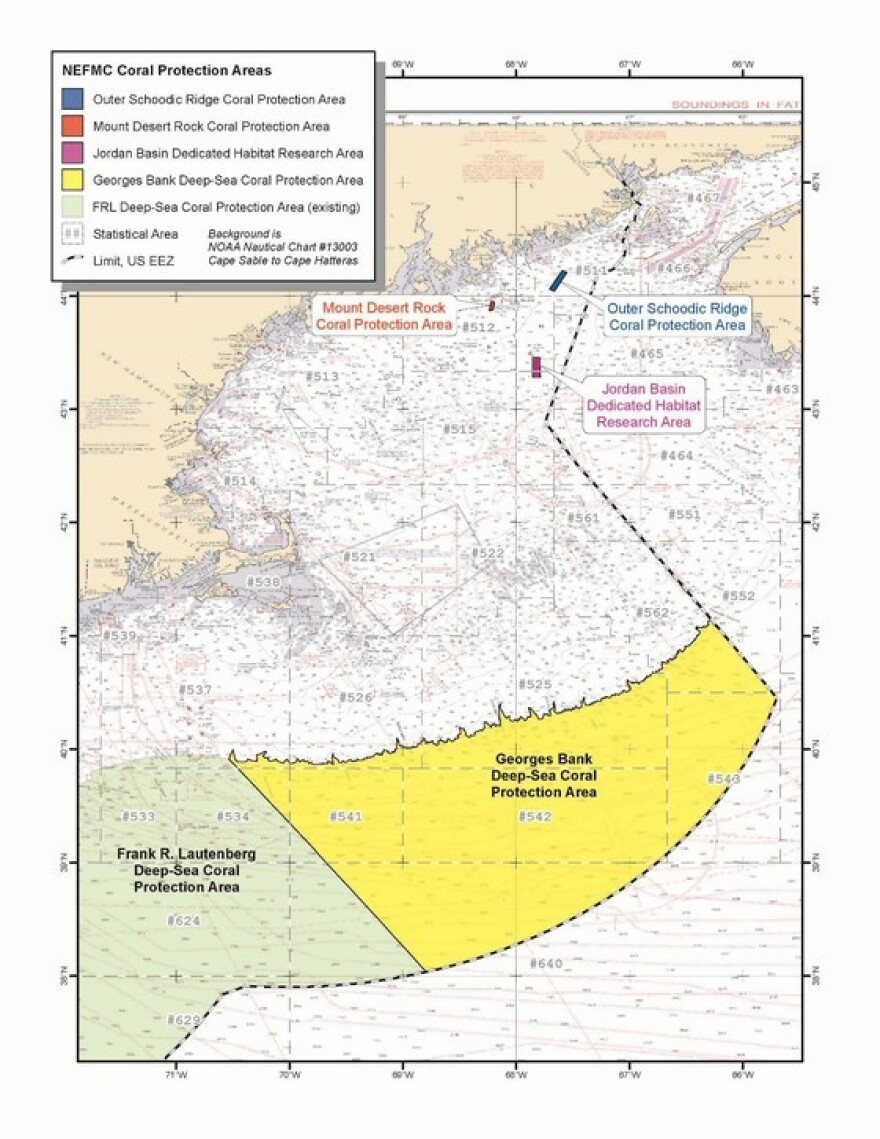Fisheries regulators in the Northeast are putting some 25,000 square miles of seafloor off-limits to some types of commercial fishing, in an effort to protect sensitive deep-sea corals.
The National Oceanic and Atmospheric Administration issued a final rule this week that bars mobile bottom-trawling gear from vast deep-sea areas along the outer continental shelf off New England and in some smaller areas closer to Maine’s coast.
"The deep sea corals have a very fragile skeleton, and can be broken or displaced with a single pass of these nets, and they won't recover," says Gib Brogan, who directs advocacy campaigns for the international group, Oceana.
Brogan says the areas in question don't see many trawlers right now - but the NOAA designations mark a proactive effort to ward off damaging fishing practices that have emerged elsewhere.
"Looking for other species that are not part of the fisheries in the U.S. There's a particular piece of gear called a "canyon-buster door" that was specifically engineered to go fishing in the deep water canyons where the corals are growing," Brogan says.
Protected zones include some sea bottom that's valued by Maine's lobster fleet - including parts of Georges Bank, an area near Mt. Desert Rock, and Schoodic Ridge. But lobster pots are specifically exempted from the new regulations, which were proposed by the regional Northeast Fisheries Management Council.

Meanwhile, new actions could be coming for an ocean area east of Cape Cod called the Northeast Canyons and Seamounts Marine National Monument. President Obama established the monument in 2016 and former President Trump later tried to weaken protections there. Now conservationists and fishermen are waiting on the outcome of a recent review of the monument's status by President Biden.


